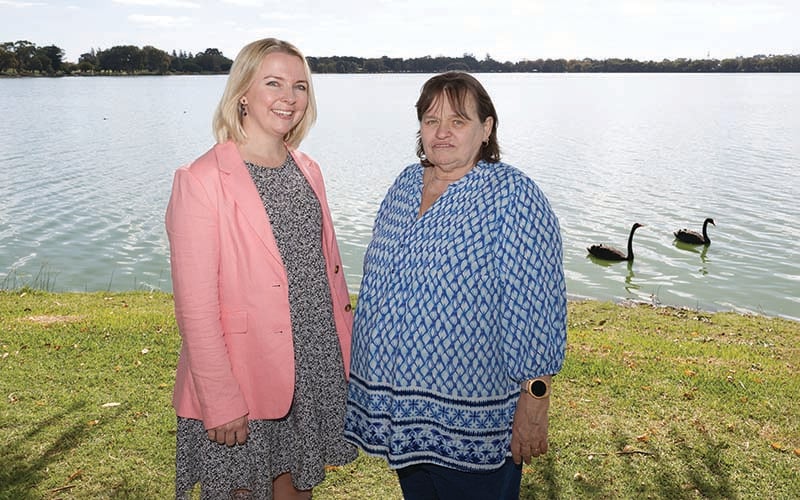
Pictured: Dr Angela Fuery (left) with Sharon Gregory
In Aboriginal culture, water is life, holding powerful spiritual and cultural significance and acting as a vital source of connection, food and medicine.
It is this healing nature of water that now sits at the centre of a major program of research being led by researchers from The Kids Research Institute Australia and Curtin University.
A team headed by Associate Professor Anthony Kicic and Dr Angela Fuery is investigating how bacteriophage, or phage – naturally occurring viruses that infect and kill harmful bacteria – can help to overcome persistent infections that have become resistant to conventional antibiotics.
The novel approach could prove particularly transformational for Aboriginal communities, where skin, ear and lung infections – and antibiotic resistance – occur at higher rates than in the wider population.
Given its potential significance to Aboriginal communities, the Phage WA team within the Wal-yan Respiratory Research Centre – a powerhouse partnership between The Kids Research Institute Australia, Perth Children’s Hospital Foundation and Perth Children’s Hospital – has begun consulting with Elders in communities across the State to ensure local voices are involved at every step.
“Instead of just walking in with phage in a bottle, we’ve developed a process of engagement, in consultation with the Kulunga Aboriginal Research unit and other groups, to build understanding of the whole story. This project morphed out of that consultation,” Associate Professor Kicic said.
Dr Fuery said it was extremely important to go to the communities without an agenda and have early engagement with them - an approach which reflects the commitment enshrined in the Institute’s Aboriginal Research Standards. The project is looking to employ an Aboriginal Community Co-researcher, then begin yarning with Elders.
Associate Professor Kicic said part of that conversation might even be about how phages might be similar to Traditional treatments. The researchers have already begun working with Noongar language teacher and Whadjuk Noongar woman Sharon Gregory to name phages sourced around the Perth area as part of the storytelling journey for the Noongar region.
The project, where phage names are inspired by their appearance, has already seen one phage named ‘Kara-mokiny kep-wari Wadjak’ – translating to ‘spider-like stillwater pond from Wadjuk’. “Looking at the pictures is how I put the Noongar words together, when I had wrapped my head around what a phage was,” Ms Gregory said.
